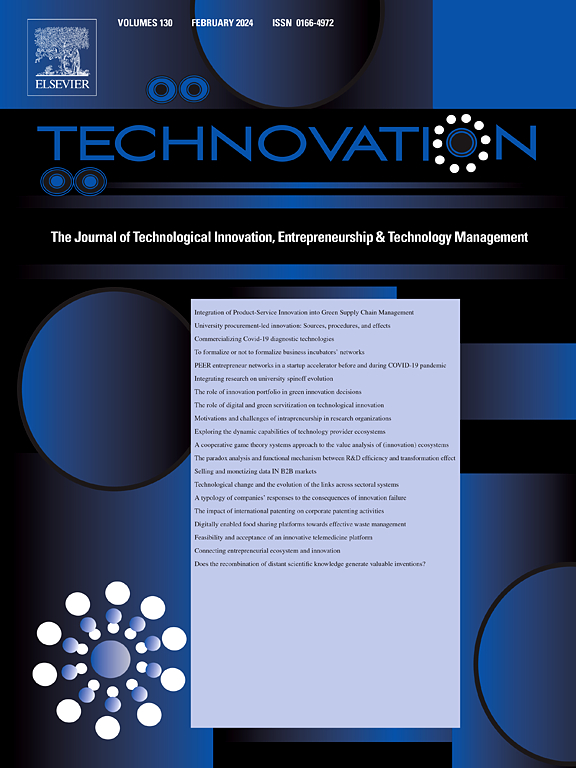Bridging AI innovation and sustainable Development: The effect of AI technological progress on SDG investment performance
IF 10.9
1区 管理学
Q1 ENGINEERING, INDUSTRIAL
引用次数: 0
Abstract
In the age of AI-driven innovation, Artificial Intelligence (AI) has become a transformative force in financial markets, reshaping investment strategies and sustainability-driven asset allocation. This study examines the impact of AI-driven innovation on the financial performance of sustainability-focused investments by analyzing the relationship between AI patent activity and the market returns of exchange-traded funds (ETFs) aligned with the United Nations Sustainable Development Goals (SDGs). Employing a state-space framework and a Kalman Filter model, we capture the dynamic influence of AI advancements on SDG-aligned ETFs, revealing that technological progress significantly enhances excess returns, particularly in the clean energy and water resource sectors. However, our analysis also uncovers sectoral variations in AI's financial impact, indicating that the benefits of AI innovation are unevenly distributed across industries. These findings bridge the gap between sustainable finance and technological innovation, demonstrating that AI serves as both a financial accelerator and a sustainability enabler. By integrating AI-driven innovation into asset pricing models, this study provides actionable insights for investors, policymakers, and corporate strategists, emphasizing the need to incorporate AI-based metrics into investment decision-making, risk assessment frameworks, and regulatory policies to foster sustainable economic growth.
连接人工智能创新和可持续发展:人工智能技术进步对可持续发展目标投资绩效的影响
在人工智能驱动创新的时代,人工智能(AI)已成为金融市场的变革力量,重塑投资策略和可持续驱动的资产配置。本研究通过分析人工智能专利活动与符合联合国可持续发展目标(sdg)的交易所交易基金(etf)的市场回报之间的关系,考察了人工智能驱动的创新对以可持续发展为重点的投资的财务绩效的影响。采用状态空间框架和卡尔曼滤波模型,我们捕捉了人工智能进步对可持续发展目标相关etf的动态影响,揭示了技术进步显著提高了超额回报,特别是在清洁能源和水资源领域。然而,我们的分析还揭示了人工智能财务影响的行业差异,表明人工智能创新的好处在各行业之间分布不均。这些发现弥合了可持续金融与技术创新之间的差距,表明人工智能既是金融加速器,也是可持续性推动者。通过将人工智能驱动的创新整合到资产定价模型中,本研究为投资者、政策制定者和企业战略家提供了可操作的见解,强调了将基于人工智能的指标纳入投资决策、风险评估框架和监管政策以促进可持续经济增长的必要性。
本文章由计算机程序翻译,如有差异,请以英文原文为准。
求助全文
约1分钟内获得全文
求助全文
来源期刊

Technovation
管理科学-工程:工业
CiteScore
15.10
自引率
11.20%
发文量
208
审稿时长
91 days
期刊介绍:
The interdisciplinary journal Technovation covers various aspects of technological innovation, exploring processes, products, and social impacts. It examines innovation in both process and product realms, including social innovations like regulatory frameworks and non-economic benefits. Topics range from emerging trends and capital for development to managing technology-intensive ventures and innovation in organizations of different sizes. It also discusses organizational structures, investment strategies for science and technology enterprises, and the roles of technological innovators. Additionally, it addresses technology transfer between developing countries and innovation across enterprise, political, and economic systems.
 求助内容:
求助内容: 应助结果提醒方式:
应助结果提醒方式:


